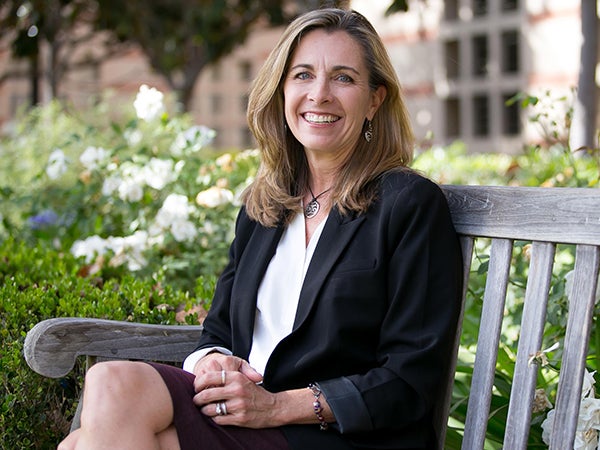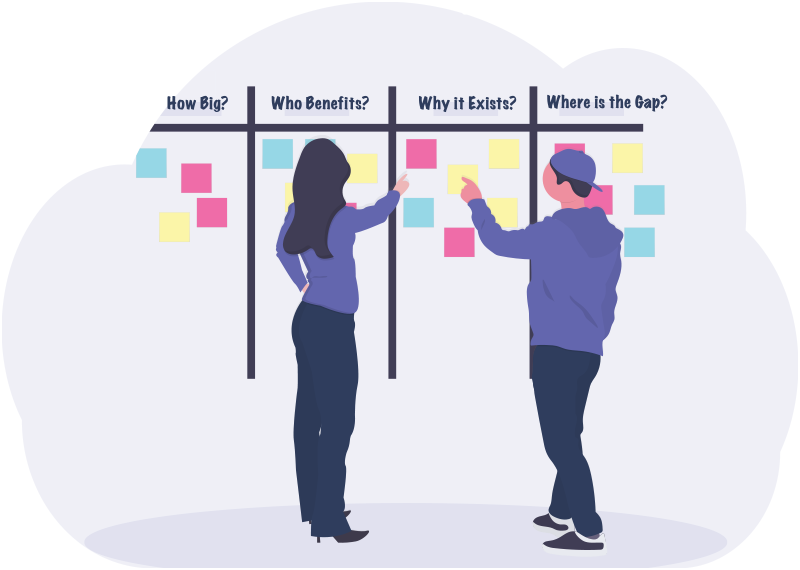Is Social Enterprise the New Business-as-Usual?
Is Social Enterprise the New Business-as-Usual?

Northrop has worked in the social impact space for more than two decades. Her experience infuses the classroom with lessons learned as both a consultant and social entrepreneur. Like her fellow alumnus BlackRock CEO Larry Fink (’76) — whose well-publicized letter to CEOs serves as course material — she believes in the relationship between corporate purpose and profits. Northrop also maintains that social entrepreneurship is not limited to startups; such principles are equally valuable within the largest corporations. “I teach students that there is an ever-growing list of business practices that prioritize people and planet, that can cost less and generate revenue,” says Northrop.
Q: What’s the goal of your course on social entrepreneurship and social impact?
The goal is to introduce a wide variety of students — those that may have no experience with social entrepreneurship or social impact and those that might be well-versed in those ideas — to some common principles, frameworks and models of social innovation and entrepreneurship.
Some of the topics we cover include legal structures for social impact organizations, from nonprofit to for-profit to a range in between, including hybrid legal structures. We talk about different types of organizations that may be considered social enterprises, explore models like employment-based social enterprises and one-for-one models, and we touch on the concepts of corporate social responsibility and shared value.
Q: How does this course fit with the other entrepreneurship courses in the Anderson curriculum, the courses designed to help students launch their own businesses?
I tell students who are interested in launching a social enterprise, you need to understand the social component of it, how you identify and embed positive social returns in an enterprise. But you also need to take business plan development and entrepreneurship venture initiation, because those are going to be critical in the fundamentals of how you start any business.
Q: How do you define social entrepreneurship and “impact”?
While the class covers the technical definitions of social entrepreneurship, social enterprise and social innovation, to me that’s less interesting than setting up conversations with the students that explore what they feel is positive social impact — how it’s created, measured and scaled — and introducing different business models that can achieve that. For example, we compare and contrast TOMS, which is a for-profit, one-for-one model that leads with its social impact story, and Warby Parker, also a for-profit, very successful company that has a strong social responsibility component. It has had a dramatic impact on the vision space globally, providing millions of glasses to folks that need them, but they’re not necessarily known for that. So we have a conversation about the pros and cons of both models, and through that, the students can decide what they believe is positive social impact.
In the case of environmental sustainability, like a solar company or Tesla, one question we explore is, does it count to have fewer negative externalities? I want the students to think about those things — the tradeoffs companies make, the motivations behind and authenticity of their actions. There aren’t enough classes at Anderson, or most business schools I believe, focused on these conversations, about the externally negative and positive social value that for-profit businesses can create.
Q: What are the assignments like?
The case studies, articles and readings are the backbone of the assignments. I think the most interesting assignment is when students get together in teams and work on a social impact project over the course of the quarter. Rather than assume that the world needs another social startup or another social venture, I have them identify a problem that they think needs solving — optimally, a problem that they know something about — and I have them go through a rigorous process of studying everything about the problem.
How big is the problem, why is it a problem, how long has it been a problem, who benefits from it staying a problem? Then they turn to studying who’s trying to solve the problem and what systemic solutions have already been tried. What’s working, what’s not working? From there, they analyze the gap between those and say, “OK, we’ve got this problem, and if we understand it so well and we’ve got all these people who are trying to solve it, where’s the gap that isn’t being met already?” They then propose a solution to close the gap: it could be to scale an existing social innovation, it could be to sustain a nonprofit that’s doing great work in the field, it could be a systems-change approach involving the government or a policy change if they’ve found that the public sector, the whole system, is what’s holding the problem in place. So, the students need to understand the problem, the solutions, the gaps, and then propose what they think is a way to close a gap. It’s using a framework called the “social impacts gap canvas.”

Q: You also teach a course in the Executive MBA program in South Africa. What does that cover?
That began as a global immersion class with Anderson’s Center for Global Management and now we’ve added a similar class for the EMBA International Business Residential. This June I’ll start doing lectures on campus and online and then in September I’ll go with 40 EMBA students to Johannesburg and Cape Town to show them some of the most amazing examples of for-profit and nonprofit social enterprises in South Africa.
They get to meet with people who have launched or are running very successful social businesses and companies with robust corporate social responsibility programs. Then I take the students into the townships to meet social entrepreneurs who are doing really inspirational work in their communities. Everything in South Africa — culture, history, politics, economics — is affected by apartheid, which didn’t end that long ago. Learning about that, and comparing social structures and social entrepreneurship in South Africa and the United States, gives the students lots to think about.


